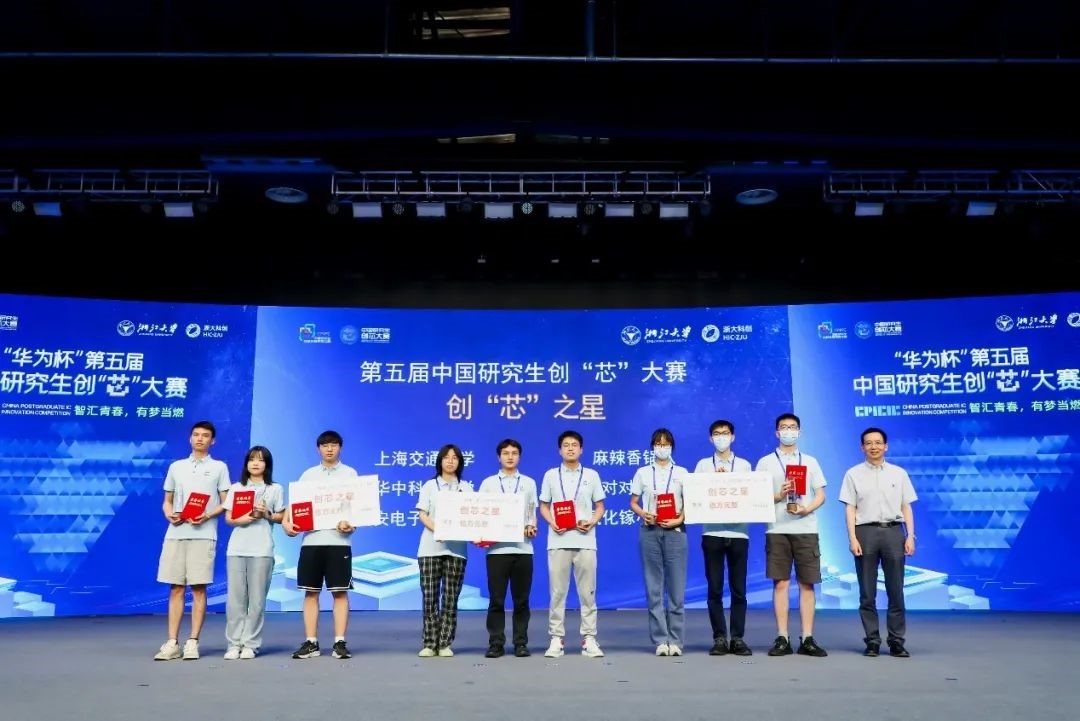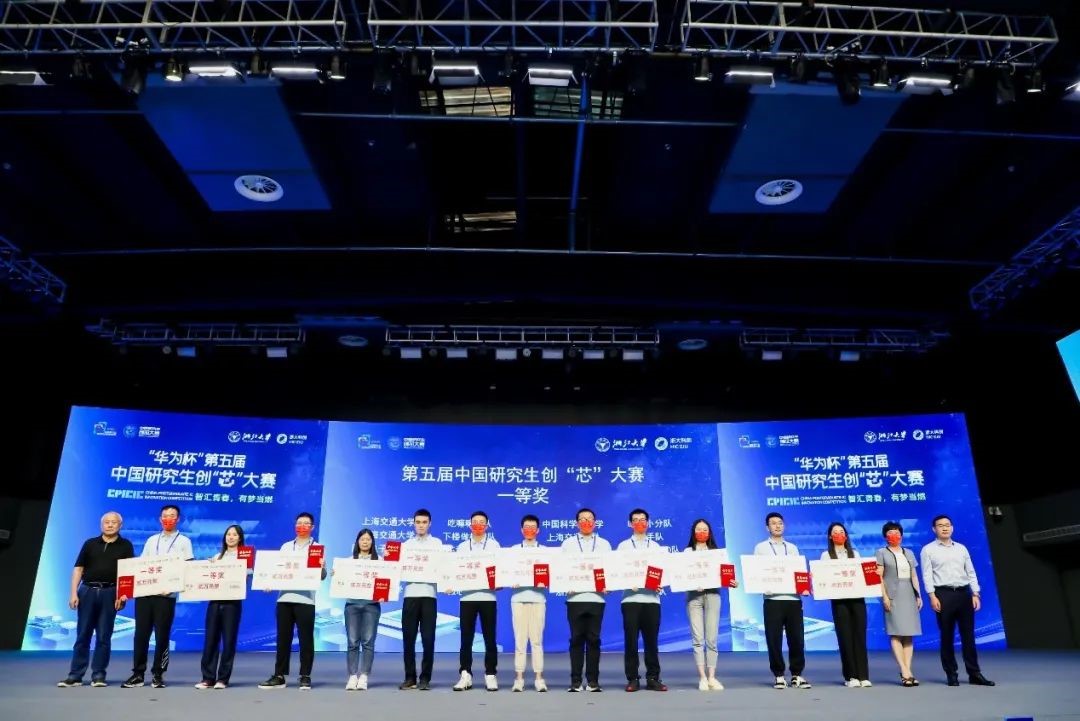Recently, the 5th “Huawei Cup” China Postgraduate IC Innovation Competition (CPICIC) was successfully held in Hangzhou, Zhejiang. SJTU students have won the grand prize “the Star of Innovation” and four first prizes, two second prizes and a third prize. They come from Department of Micro-Nano Electronics and Department of Electronic Engineering, School of Electronic Information and Electrical Engineering (SEIEE).

 There are 154 teams from 48 universities in China participating in the final competition of CPICIC, and nearly 500 students competed fiercely in examination, oral defense and presentation. Finally, three “Stars of Innovation”, 12 first prizes and 36 second prizes were selected. Nine teams from SEIEE, SJTU signed up for the competition, and eight teams successfully made it to the final and won awards. Moreover, the number of first prizes won by SJTU ranked first among all participating universities.
There are 154 teams from 48 universities in China participating in the final competition of CPICIC, and nearly 500 students competed fiercely in examination, oral defense and presentation. Finally, three “Stars of Innovation”, 12 first prizes and 36 second prizes were selected. Nine teams from SEIEE, SJTU signed up for the competition, and eight teams successfully made it to the final and won awards. Moreover, the number of first prizes won by SJTU ranked first among all participating universities.

SEIEE, SJTU has participated in the competition for five consecutive years with excellent results. This year, SEIEE students once again won the highest award “the Star of Innovation”. After 2019 and 2020, this is the third time that students of SEIEE have won this honor. The award-winning work is entitled “The Design of High Reliability and Low Power Consumption On-Chip Interconnection Circuit”. Aiming at the demand and challenges of maintaining high reliability, low latency and low power consumption of on-chip interconnection in multi-core operating systems, this work reduces the metastable state risk in Clock Domain Crossing (CDC) by ten orders of magnitude and reduces the delay in data transmission through the technology of metastable state prediction and solution. Also, it effectively reduces the power consumption of interconnection by about 50% through the charge recovery technology based on coding. The design of on-chip interconnection circuit proposed in this work is significant to meet the demand of high-efficiency and high-reliability interconnection of multi-core systems, and it could also promote the commercialization of related scientific achievements.
